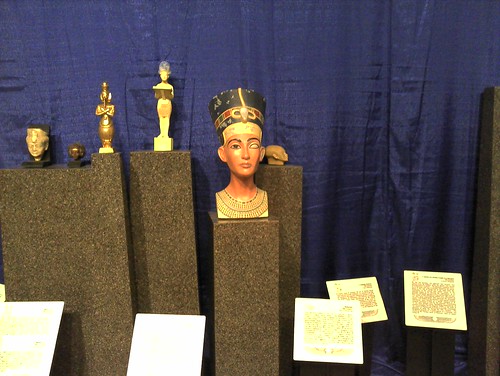We all know the story of King Tut. He was the young pharaoh who died at a young age. That's the extent of our knowledge of his story.
Tutankhamun reigned over Egypt 3,350 years ago. He was a young king that was admired and respected by his people. Perhaps the reason for that respect was due to his knowledgeable advisers.
The young pharoah ascended to the throne when he was nine years of age. He was wed to his half-sister, Ankhesenamun (daughter of Nefertiti). They had children but were both stillborn.
It's still a mystery as to how Tutankhamun died. Recently, scientists believe he died of a combination of malaria and a broken leg. Regardless, the debate as to his death continues.
A few days ago, my parents took my son and I to the Tutankhamun exhibit at my alma mater--University of Texas Pan American in Edinburg. The exhibit showcased artifacts found in the young pharoah's tomb. It also contained the mummified King in his coffin; although, I question its authenticity.
Regardless, the exhibit provided guests a glimpse of Tutankhamun's life, death, and its discovery by Carter.

Inside the Tutankhamun exhibit
The Pharoah's Curse
The Ritual Couch
Nefertiti, aunt to Tutankhamun
The anubis shrine guard King Tut's internal organs

Alabaster canopic chest held King Tut's internal organs
Golden Shrine and Tutelary Goddesses

The Pharaoh's coffin
Sources: Wikipedia; http://portal.utpa.edu/utpa_main/dess_home/admissions_home_new/visit_home/kingtut_home





No comments:
Post a Comment